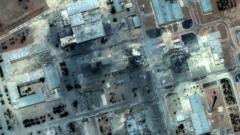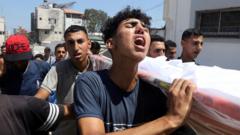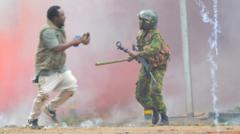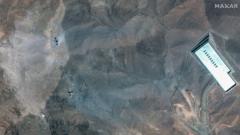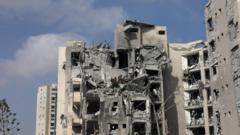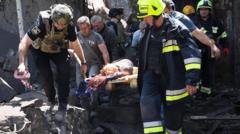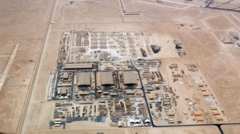The recent deployment of drones in the India-Pakistan conflict signals a dangerous evolution in military tactics, with both sides exchanging unmanned attacks and heightened rhetoric. Experts warn that this escalation raises serious implications for stability in the region and may set a precedent for future engagements.
Drones Redefine the India-Pakistan Conflict Amidst Rising Tensions
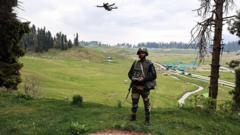
Drones Redefine the India-Pakistan Conflict Amidst Rising Tensions
The onset of drone warfare between India and Pakistan marks a significant escalation in their longstanding rivalry, as both nations engage in an aerial battle amidst global calls for restraint.
The ongoing conflict between India and Pakistan has entered a new era with the advent of drone warfare, raising concerns about escalation in South Asia. Indian military officials accused Pakistan of using drones and missiles to target their military bases in Indian-administered Kashmir, while Pakistan countered that it had shot down 25 Indian drones, leading to a new cycle of tit-for-tat confrontations. With both countries being nuclear-armed, this shift to unmanned aerial warfare has drawn the attention of global powers urging for restraint to avoid escalation.
Experts note that the integration of precision drone strikes alters the dynamics of the conflict, with the potential to shape battles through superior surveillance capabilities. Jahara Matisek, a US Naval War College professor, emphasized that mastering drone warfare would grant either side significant strategic advantages in light of evolving threats. Since recent strikes, casualties have reportedly mounted on both sides, with India maintaining that their attacks were retaliatory in response to recent militant actions.
Pakistan's drone inventory reportedly includes over a thousand units from various foreign and local manufacturers, contrasting with India's UAV assets primarily sourced from Israeli technologies. The increasing technological capability of both nations underlines the ongoing arms race in the region, specifically in the implementation of loitering munitions and tactical drones.
While the recent escalation reflects a change in military strategy, experts differentiate it from the extensive use of drones in the Russia-Ukraine conflict. They argue that the drone exchanges reflect a tactical response rather than a full-blown war, with implications that could either lead to greater conflict or de-escalation in hostilities.
Despite the pronounced role of drones, both sides have ultimately relied on traditional air forces to launch attacks, indicating that drone warfare is still nascent in its tactical application. Observers fear that every drone lost or radar blinded could become triggers for further actions, highlighting the fragility of the situation.
As drone warfare evolves, questions about the political and operational thresholds for military action loom, potentially increasing risks in a high-stakes environment between two nuclear nations. Analysts suggest that current developments signal a critical inflection point with uncertain outcomes, as various military strategies await to be fully realized in this volatile context.








